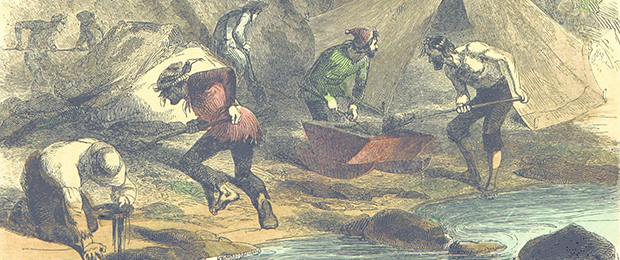"O’Reilly Radar Podcast" entries

“Internet of Things” is a temporary term
The O'Reilly Radar Podcast: Pilgrim Beart on the scale, challenges, and opportunities of the IoT.
Subscribe to the O’Reilly Radar Podcast to track the technologies and people that will shape our world in the years to come.
In this week’s Radar Podcast, O’Reilly’s Mary Treseler chatted with Pilgrim Beart about co-founding his company, AlertMe, and about why the scale of the Internet of Things creates as many challenges as it does opportunities. He also talked about the “gnarly problems” emerging from consumer wants and behaviors.

The future of data at scale
The O'Reilly Radar Podcast: Turing Award winner Michael Stonebraker on the future of data science.
Subscribe to the O’Reilly Radar Podcast to track the technologies and people that will shape our world in the years to come.
In March 2015, database pioneer Michael Stonebraker was awarded the 2014 ACM Turing Award “for fundamental contributions to the concepts and practices underlying modern database systems.” In this week’s Radar Podcast, O’Reilly’s Mike Hendrickson sits down with Stonebraker to talk about winning the award, the future of data science, and the importance — and difficulty — of data curation.
One size does not fit all
Stonebraker notes that since about 2000, everyone has realized they need a database system, across markets and across industries. “Now, it’s everybody who’s got a big data problem,” he says. “The business data processing solution simply doesn’t fit all of these other marketplaces.” Stonebraker talks about the future of data science — and data scientists — and the tools and skill sets that are going to be required:
It’s all going to move to data science as soon as enough data scientists get trained by our universities to do this stuff. It’s fairly clear to me that you’re probably not going to retread a business analyst to be a data scientist because you’ve got to know statistics, you’ve got to know machine learning. You’ve got to know what regression means, what Naïve Bayes means, what k-Nearest Neighbors means. It’s all statistics.
All of that stuff turns out to be defined on arrays. It’s not defined on tables. The tools of future data scientists are going to be array-based tools. Those may live on top of relational database systems. They may live on top of an array database system, or perhaps something else. It’s completely open.

Guidance for startup CEOs in the hot seat
The O'Reilly Radar Podcast: Dan Shapiro on his new book Hot Seat, startup co-founders, and imposter syndrome.
Subscribe to the O’Reilly Radar Podcast to track the technologies and people that will shape our world in the years to come.
In this episode of the O’Reilly Radar Podcast, I chat with Dan Shapiro, author and CEO of Glowforge, about his new book Hot Seat: The Startup CEO Guidebook, why startups need co-founders, and why startups are hotbeds for imposter syndrome (and why that’s OK). He also talks a bit about his new endeavor, Glowforge, and how it’s different from other startups he’s launched.
Shapiro explained that the target audience for the book isn’t limited to startup CEOs — in fact, he noted, it’s quite the opposite. “The audience that I’m really excited about getting to see this is everybody who’s not the startup CEO,” he told me. This would include everyone else in the startup ecosystem: co-founders, employees working at a startup, and people employed at big companies who are thinking about taking the leap to found their own startups. He said he wrote this book for “people who are on the cusp or who are touching or who are thinking about that role, either directly or indirectly” — he wrote the book he’d wished he’d had when he started out:
The thing that I wished I’d had in my startup experience — and was always missing — was the honest and unfiltered look at the earliest days of a startup. That was not just, ‘here’s some advice,’ because advice is plentiful and mostly wrong, but real experiences of the stuff that happens. My personal experience, I’m on my fourth or fifth company now, depending on how you count, was that, especially in my first and second companies, I was going through misery and suffering and had these terrible problems. I thought I was the only one who did. I was ashamed to talk about them because everybody else seemed like everything was great and sunny, and I was like, ‘Wow, if my co-founders and I can’t get along, how am I even fit to think about running a company, or shouldn’t we just give up now.’
It was only years later that I realized that almost every set of co-founders has problems and has trouble getting along and runs into issues, and that’s okay. That there are techniques for dealing with that and this is actually really common; it’s just that people are ashamed to talk about it. I wanted to write the book that took lots of peoples’ stories and put them together in the context of, ‘look, startups involve a lot of highs, which there is no shortage of to read about in the press, but a lot of lows as well’ and those are not as often talked about; to talk about some of the experiences of those lows, and strategies for dealing with them.

The new fintech: mobile, decentralized, and friction-free
The O'Reilly Radar Podcast: Dele Atanda and Mutaz Qubbaj talk about their startup platforms and the disruption in fintech.
Learn more about Next:Money, O’Reilly’s conference focused on the fundamental transformation taking place in the finance industry.
In this Radar Podcast episode, I chat with Dele Atanda, founder and CEO of Digitteria, about the disruptive state of the financial tech industry, what he thinks is driving that disruption, and why smart data (as opposed to big data) is going to revolutionize finance. I also talk with Mutaz Qubbaj, CEO and co-founder of Squirrel, about about the Squirrel platform, accelerator programs, and how he views the big disruptors in fintech landscape.
We’ve started an investigation — and launched a new summit, Next:Money — here at O’Reilly to look into the disruption happening in the fintech industry, as burgeoning startups create services and products that threaten to disaggregate traditional finance incumbents. I recently had the opportunity to sit down with a number of fintech startup founders and will be featuring several of those conversations in upcoming Radar Podcasts.
Dele Atanda founded Digitteria, a startup developing sustainable identity and personal data management solutions for both consumers and enterprise. I asked him why the time is ripe for disruption — he pointed to the growing complexity of the landscape and compared the current state of the finance industry to the early stages of the Web:
There’s a significant increase in complexity, and in that complexity there’s a much more detailed and rich ecosystem. Banks, it’s difficult for them to be able to tackle all the ends and elements efficiently, so it’s interesting because it’s almost representative of, it’s lacking the evolution of the Web, but it mirrors it in very many ways. Initially, you had these monolithic sort of applications, or browsers, or services that tried to do lots of things, and then we moved into the mobile era where things became much more siloed and application centric, where you did one thing particularly well. That’s inevitably going to happen in the fintech space. They say that the currency of the industrial era was paper, and the currency of the knowledge era is the electron.
Money is primarily electronic now, so it’s inevitable that there’s going to become this confluence between the Web and finance in that regard. I think, of course, because of security, regulatory issues, and the cultural dimension of money, there’s been a lag and resistance. Now that the Web has reached a level of maturity that it can address those issues, I think that’s inevitable.

Real-world interfaces are in an awkward and playful stage
The O'Reilly Radar Podcast: Josh Clark on the world as an interface, avoiding data rash, and the importance of play.
Subscribe to the O’Reilly Radar Podcast to track the technologies and people that will shape our world in the years to come.
 In this week’s episode of the Radar Podcast, O’Reilly’s Mary Treseler chats with Josh Clark, founder of design agency Big Medium (formerly known as Global Moxie). Clark talks about the changing nature of his work as the world itself becomes more of an interface, how to avoid “data rash,” and why in this time of rapid technology growth it’s essential for designers to splash in the puddles.
In this week’s episode of the Radar Podcast, O’Reilly’s Mary Treseler chats with Josh Clark, founder of design agency Big Medium (formerly known as Global Moxie). Clark talks about the changing nature of his work as the world itself becomes more of an interface, how to avoid “data rash,” and why in this time of rapid technology growth it’s essential for designers to splash in the puddles.
The world is the medium
The influence of the Internet of Things is beginning to touch every aspect of our lives, from how we communicate to how we work to how we play. This fundamental shift away from screens to the real-world around us not only is influencing how designers approach their craft, but is changing the medium itself in which designers work. Clark talked about this shift and how it’s affecting his own work:
Over the last couple of years, I’ve found the nature of my work has been changing as well as my interests. I think the culture of digital design is changing, too, as we start moving off of screens. It felt like an opportunity to redefine my own work, so I also did that with my agency and changed its name to Big Medium. The idea of that being that the Internet itself is a pretty big medium, and in fact starting to expand beyond the bounds that we’ve traditionally associated it with, which is the screen. Increasingly, as we’re seeing connected devices — the smart phones were kind of the leading edge of this, but now we’re starting to see wearables and the Internet of Things — this idea that the Internet is becoming embedded in our environment and in everyday objects means that anything can be an interface.
My work is starting to engage more and more with that truly big medium, which is the world itself. Finally, the world is the interface, which of course it always has been, but now we’re able to create digital experiences that belong to the world that we actually move in instead of us having to dive into the screens.

How Shazam predicts pop hits
The O'Reilly Radar Podcast: Cait O'Riordan on Shazam's predictive analytics, and Francine Bennett on using data for evil.
Subscribe to the O’Reilly Radar Podcast to track the technologies and people that will shape our world in the years to come.
 In this week’s Radar Podcast, I chat with Cait O’Riordan, VP of product, music and platforms at Shazam. She talks about the current state of predictive analytics and how Shazam is able to predict the success of a song, often in the first few hours after its release. We also talk about the Internet of Things and how products like the Apple Watch affect Shazam’s product life cycles as well as the behaviors of their users.
In this week’s Radar Podcast, I chat with Cait O’Riordan, VP of product, music and platforms at Shazam. She talks about the current state of predictive analytics and how Shazam is able to predict the success of a song, often in the first few hours after its release. We also talk about the Internet of Things and how products like the Apple Watch affect Shazam’s product life cycles as well as the behaviors of their users.
Predicting the next pop hit
Shazam has more than 100 million monthly active users, and its users Shazam more than 20 million times per day. This, of course, generates a ton of data that Shazam uses in myriad ways, not the least of which is to predict the success of a song. O’Riordan explained how they approach their user data and how they’re able to accurately predict pop hits (and misses):
What’s interesting from a data perspective is when someone takes their phone out of their pocket, unlocks it, finds the Shazam app, and hits the big blue button, they’re not just saying, “I want to know the name of this song.” They’re saying, “I like this song sufficiently to do that.” There’s an amount of effort there that implies some level of liking. That’s really interesting, because you combine that really interesting intention on the part of the user plus the massive data set, you can cut that in lots and lots of different ways. We use it for lots of different things.
At the most basic level, we’re looking at what songs are going to be popular. We can predict, with a relative amount of accuracy, what will hit the Top 100 Billboard Chart 33 days out, roughly. We can look at that in lots of different territories as well. We can also look and see, in the first few hours of a track, whether a big track is going to go on to be successful. We can look at which particular part of the track is encouraging people to Shazam and what makes a popular hit. We know that, for example, for a big pop hit, you’ve got about 10 seconds to convince somebody to find the Shazam app and press that button. There are lots of different ways that we can look at that data, going right into the details of a particular song, zooming out worldwide, or looking in different territories just due to that big worldwide and very engaged audience.

CSS Grid Layout: The modern way of doing layout on the Web
The O'Reilly Radar Podcast: Rachel Andrew on modern Web layout, and Kyle Simpson defends JavaScript Coercion.
Subscribe to the O’Reilly Radar Podcast to track the technologies and people that will shape our world in the years to come.
In this week’s episode of the Radar Podcast, O’Reilly’s Mac Slocum chats with Rachel Andrew, founder of edgeofmyseat.com, about CSS Grid Layout and the role responsive design is playing in emerging Web technologies.
In 2004, Andrew published The CSS Anthology: 101 Essential Tips, Tricks & Hacks. Through the years of revisions, she noted in the interview, not that much has changed; sure, we’ve moved on from Netscape 4, she said, but “the [layout] methods we’re using haven’t moved on much since I wrote that book, which is kind of terrifying.” This is why Andrew is so excited about CSS Grid Layout, which she sees as bringing Web layout into the modern day:
CSS Grid Layout is a new spec, an emerging spec. It originally came from Microsoft. In fact, there’s an early implementation of it in IE 10 and 11. It’s kind of moved on now. It’s really a specification for laying out Web pages and/or applications. It’s something that we haven’t really had up to now. The specs and the sort of things that we’re using for layout, things like float and so on, really are quite like hacks to get them to work. Developers have been working around this stuff for years. Grid, I’m quite excited about because it’s sort of the first time it feels like a really modern way of doing layout on the Web.

A vision of a decentralized IoT stack
The O'Reilly Radar Podcast: Eric Jennings on the importance of creating a decentralized Internet for the Internet of Things.
Subscribe to the O’Reilly Radar Podcast to track the technologies and people that will shape our world in the years to come.
In this week’s Radar Podcast, I followed up with Eric Jennings, co-founder and CEO of Filament, about his vision of a decentralized Internet. In last week’s episode, Jennings chatted with O’Reilly’s Mac Slocum a bit about a decentralized Internet in the context of the Internet of Things, and I ventured a bit deeper into the topic this week.
I asked Eric about the model — what would a decentralized Internet for the IoT look like and how would it work? He likened it to the Web:
We actually take a large portion of our model, our mental model, about a decentralized IoT from the early Web. If you imagine back in the early Web days — way back, mid-80s, early 90s — HTTP and websites had just started coming around, and they were originally focused and designed for academic research papers to link to each other.
Back then there was this entire, and there still is, there’s an entire open protocol stack that the Web runs on. Since any site could link directly to another site, it became very open and friendly, and there were all these wonderful things that emerged from — the Facebooks and Googles and WordPresses of the world were built on top of this standardized open reference platform.
What we like to think is, what would that look like if you took that concept and mapped it over onto the Internet of Things? What similar analogies to the Facebooks and Googles and WordPresses would we see if we had a truly decentralized and open IoT stack, and not necessarily one that’s full of silos and verticalized specific solutions to small industry segments.

Our future sits at the intersection of artificial intelligence and blockchain
The O'Reilly Radar Podcast: Steve Omohundro on AI, cryptocurrencies, and ensuring a safe future for humanity.
Subscribe to the O’Reilly Radar Podcast to track the technologies and people that will shape our world in the years to come.
I met up with Possibility Research president Steve Omohundro at our Bitcoin & the Blockchain Radar Summit to talk about an interesting intersection: artificial intelligence (AI) and blockchain/cryptocurrency technologies. This Radar Podcast episode features our discussion about the role cryptocurrency and blockchain technologies will play in the future of AI, Omohundro’s Self Aware Systems project that aims to ensure intelligent technologies are beneficial for humanity, and his work on the Pebble cryptocurrency.
Synthesizing AI and crypto-technologies
Bitcoin piqued Omohundro’s interest from the very start, but his excitement built as he started realizing the disruptive potential of the technology beyond currency — especially the potential for smart contracts. He began seeing ways the technology will intersect with artificial intelligence, the area of focus for much of his work:
I’m very excited about what’s happening with the cryptocurrencies, particularly Ethereum. I would say Ethereum is the most advanced of the smart contracting ideas, and there’s just a flurry of insights, and people are coming up every week with, ‘Oh we could use it to do this.’ We could have totally autonomous corporations running on the blockchain that copy what Uber does, but much more cheaply. It’s like, ‘Whoa what would that do?’
I think we’re in a period of exploration and excitement in that field, and it’s going to merge with the AI systems because programs running on the blockchain have to connect to the real world. You need to have sensors and actuators that are intelligent, have knowledge about the world, in order to integrate them with the smart contracts on the blockchain. I see a synthesis of AI and cryptocurrencies and crypto-technologies and smart contracts. I see them all coming together in the next couple of years.

Chaos Monkey for systems of people: The ultimate performance hack
The O'Reilly Radar Podcast: Alois Reitbauer on performance hacking, DevOps applications, and fostering a culture of respect.
Subscribe to the O’Reilly Radar Podcast to track the technologies and people that will shape our world in the years to come.
In this week’s episode of the Radar Podcast, O’Reilly’s Courtney Nash chats with Alois Reitbauer, chief evangelist at Ruxit, about how DevOps is deeply woven into the Ruxit culture. Reitbauer also talks about how the term “performance hacking” came about at Ruxit, why Chaos Monkey should be applied to systems of people, and why trust across — and between — all departments in an organization is essential.
DevOps beyond DevOps
Performance hacking is a term that emerged at Ruxit about a year ago as the company prepared for the beta launch, Reitbauer said, when they realized as the company scaled up, they needed to bring everyone from all their teams together. “The idea of performance hacking, then,” he noted, “was really, how can we scale up this collaboration between the DevOps teams, the product development teams, and our go-to-market growth hacking teams while we grow as an organization.” The ultimate aim was to figure out how to continue to act like a three-person, one-room startup as the company scaled to a couple hundred people.
One of the approaches embraced at Ruxit is to apply some of the DevOps best practices to their growth hacking and product development strategies. As an example, Reitbauer offered up the idea of Chaos Monkey, as applied not to AWS instances, but to the organization as a whole. The way it works, he explained, is to send a member of a team — any team — away on short notice (or no notice) and see what breaks. Reitbauer said that they’d actually done this and outlined what they learned from the exercise:
We have done it, and it also came up as part of our regular organizational practices. Like, when we had our first very strong conference season — we sent people to different shows all over the place; we picked people from the team who had to go somewhere. And even if people knew they were going to be out of the office in a couple of weeks, they still started to behave as if they would be around all the time, that they wouldn’t be leaving the office. Then, suddenly they were on a plane. They had no time to do their everyday work, and suddenly they realized where they really needed help. So, you don’t even have to make it a total surprise. You just have to plan how to get people out of their regular working behavior to do something else. Then we were able to figure out, ‘We really need somebody else to be able to jump in here or to help somebody out over there.’ It might be a regular holiday or just not daily routine.







